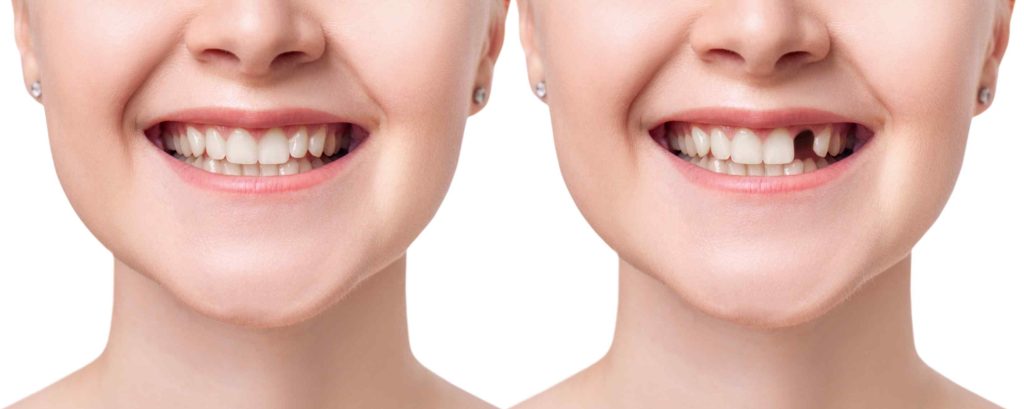In dental health and aesthetics, dental prostheses stand out as a cornerstone for those seeking to regain their smile’s full functionality and appearance. Let’s explore the multifaceted world of dental prostheses, offering insights into the types, benefits, and considerations involved in choosing the right solution for individual needs.
The Imperative of Replacing Teeth
For numerous individuals, the journey towards oral health involves replacing teeth lost due to injury, decay, or disease. The absence of one or more teeth can significantly impact not just the visual aspect of a smile but also the overall oral functionality, leading to challenges in speaking and eating and a potential misalignment of the remaining teeth. Dental prostheses offer a way to address these issues, restoring aesthetics and function.
Understanding Dental Prostheses
Dental prostheses encompass many devices designed to replace missing teeth, reconstruct damaged ones, and support the tissues within the mouth. They can be broadly categorized into two main types: removable and fixed prostheses.
Removable Dental Prostheses
These include devices such as dentures, which can be full or partial. Full dentures are used when all teeth in the upper or lower jaw need to be replaced, while partial dentures are those who still retain some of their natural teeth. Removable prostheses offer the flexibility of being taken out for cleaning, although they may require adjustments over time to maintain a proper fit.
Fixed Dental Prostheses
Fixed prostheses, such as bridged and implants, are anchored into place and offer a more permanent solution. Bridges are used to span the gap where one or more teeth are missing, anchored on either side by crowns on the natural teeth or implants. Dental implants represent a more comprehensive solution, involving a titanium post surgically implanted into the jawbone, atop which a crown in placed, mimicking the look and function of a natural tooth.
The Benefits of Dental Prostheses
Adopting dental prostheses brings numerous benefits, paramount among them being improved oral health. By filling the gaps left by missing teeth, prostheses help prevent the remaining teeth from shifting, which could lead to bite and jaw problems. Additionally, they alleviate the stress on oral structures, contributing to a balanced distribution of bite forces.
Aesthetically, dental prostheses play a critical role in restoring the appearance of one’s smile, which can significantly boost self-esteem and confidence. They also improve the mouth’s functionality, enabling individuals to eat a wider variety of foods and articulate more clearly, thus enhancing the quality of life.
Selecting the Right Dental Prosthesis
The process of selecting the most appropriate dental prosthesis involves several factors. The extent of tooth loss and the condition of the remaining teeth and gum tissue are assessed. The patient’s overall health, lifestyle, and budget are also considered, alongside the desired maintenance level for the prosthesis.
Consultation with a dental professional is essential to determine the most suitable type of dental prosthesis. During this consultation, a detailed examination of the oral cavity is conducted, possibly accompanied by imaging studies to assess the bone density and structure of the jaw. This assessment aids in crafting a personalized treatment plan that aligns with the patient’s specific needs and preferences.
Maintenance and Care for Dental Prostheses
Sustaining the longevity and effectiveness of dental prostheses requires diligent care and maintenance. For removable prostheses, routine cleaning is essential to prevent the build-up of plaque and ensure the health of the underlying gum tissue. Fixed prostheses, like implants and bridges, necessitate regular brushing, flossing, and visits to the dentist to monitor their condition and prevent complications.
The Role of Technological Advances
Technological advancements have significantly enhanced the field of dental prosthetics, offering more precise and durable solutions. Digital imaging 3D printing has revolutionized the design and fabrication of custom-fit prostheses, ensuring higher comfort and functionality. Furthermore, the development of new materials has led to prostheses that better mimic the appearance and feel of natural teeth, thereby enhancing the overall outcome for patients.
The future of dental prostheses is poised for further innovation. Research is underway to explore the use of biocompatible materials that can integrate more seamlessly with the body, potentially leading to even more natural and long-lasting solutions. Moreover, exploring regenerative dental treatments, which aim to stimulate the body’s natural ability to repair and regrow tissues, including teeth, holds promising potential for the field.
Innovation and Customization in Dental Prostheses
As we delve deeper into the capabilities of modern dentistry, the customization of dental prostheses stands out as a pivotal aspect of patient care. Customization ensures that each prosthesis fits perfectly and matches the natural color and shape of the patient’s existing teeth, providing a seamless and aesthetically pleasing result. This level of personalization is achieved through advanced techniques such as digital scans of the mouth, which offer a precise foundation for creating comfortable and functional prostheses.
Psychological Impact and Social Implications
The impact of dental prostheses on an individual’s psychological well-being cannot be overstated. Restoring a full, healthy smile can dramatically improve self-perception and confidence, facilitating better interactions in both personal and professional spheres. The social implications of this renewed confidence are profound, as individuals feel more inclined to engage in social activities, pursue opportunities, and express themselves more freely.
Economic Consideration and Accessibility
While the benefits of dental prostheses are clear, it is also important to address the economic considerations involved. The cost of dental prostheses can vary widely, depending on the type of prosthesis, the materials used, and the complexity of the patient’s case. Financial factors play a significant role in decision-making, and dental professionals must provide transparent information about costs and potential financing options. Efforts to increase accessibility through insurance coverage and payment plans are essential to ensure that more individuals can avail themselves of these life-enhancing treatments.
Final Thoughts
The world of dental prostheses offers hope for individuals looking to restore their smile and improve their oral health. Through a combination of advanced technology, personalized care, and comprehensive patient education, dental professionals can provide solutions that enhance the aesthetics of a smile and contribute to overall well-being and quality of life. As we look forward to the advancements in this field, the prospect of embracing a new smile becomes an increasingly accessible and transformative experience for individuals around the globe.


